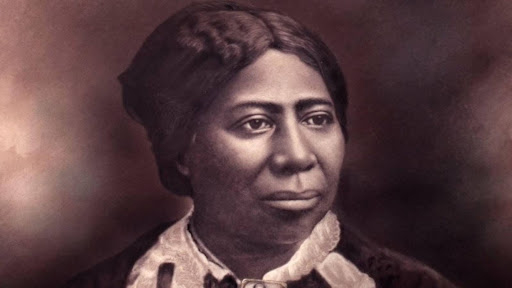In the history books, there are often hidden threads woven by unsung heroes whose contributions echo through time. Anna Murray Douglass, the wife of the renowned abolitionist Frederick Douglass, emerges as a figure of remarkable courage and resilience, leaving an enduring mark on the fight for freedom and equality.
Born into the harsh realities of slavery in Maryland in 1813, Anna Murray Douglass was the eighth child born to parents Bambarra and Mary Murray, who were freed just one month before her birth, Enslaved.org reports. Despite the formidable barriers placed before her, she demonstrated an unwavering spirit and an insatiable thirst for liberty. Her journey toward freedom was not only personal but became a beacon of hope for countless others, a testament to the indomitable human spirit.
Murray Douglass’ path intersected with Frederick Douglass’ in the 1830s, the National Park Service reports. They met in Baltimore, where Frederick, who was also formerly enslaved, had escaped and was seeking employment. Murray Douglass, a free woman who worked as a domestic servant, played a pivotal role in aiding Frederick’s escape from slavery. Their shared commitment to the abolitionist cause became the foundation of a partnership marked by mutual support and activism.
As a couple, the Douglasses became an undeniable force in the fight against slavery. While Murray Douglass, often overshadowed by her husband’s towering presence, was an ardent advocate for the abolitionist movement. Her home in Rochester, New York, became a haven for freedom seekers, a station on the Underground Railroad where the Douglasses provided refuge to those fleeing the chains of oppression.
Still, her activism was not confined to the walls of her home. She actively participated in anti-slavery meetings, fundraisers, and community events, her voice a steadfast presence in the quest for justice. In the Douglass household, discussions about freedom, equality, and the abolition of slavery were not merely theoretical; they were lived experiences, a testament to Anna’s unwavering commitment to the cause.
Murray Douglass’s resilience was particularly evident during Frederick’s travels. As he crisscrossed the country, delivering powerful speeches and galvanizing support for the abolitionist cause, she continued to manage the household and family affairs with grace and determination while raising their five children before the youngest child, Annie’s, untimely death in 1860. Her role as a supportive partner, both emotionally and intellectually, allowed Frederick to pursue his advocacy with a steadfast ally by his side, a testament to her strength and influence.
Following Frederick Douglass’s death in 1895, she continued her commitment to social justice. She played an active role in women’s suffrage, understanding the interconnectedness of various forms of oppression. While Murray Douglass never realized her dreams of becoming literate, her legacy lives on as a testament to the power of resilience, love, and activism in the face of adversity.
In celebrating the life and work of Anna Murray Douglass, we recognize that the fight for freedom and equality was a collective effort, often led by dynamic partnerships. Her story challenges us to look beyond the spotlight and acknowledge the often-overlooked heroes whose contributions paved the way for progress. Because of her valor, the Douglass legacy is not merely a singular narrative but a shared journey toward a more just and equitable world.
Cover photo: Remembering the Unsung Legacy of Abolitionist Anna Murray Douglass/Photo credit: National Park Service

